Have you ever stared at your 3D printer and thought, “How can I turn this into something profitable?” Maybe you’ve tried experimenting with prints but aren’t sure what’s in demand, or you’re overwhelmed by all the possibilities. The reality is, many people face the same challenge—they don’t know where to start.
Here’s the good news: 3D printing isn’t just a hobby; it’s a golden business opportunity. Whether it’s creating functional tools, personalized gifts, or decorative items, the market for 3D printed things to sell is booming. With the right strategy, you can carve out a niche, cater to unique customer needs, and transform your creativity into income.
In this guide, we’ll dive into the best things to 3D print and sell, highlight the reasons 3D printing is a perfect business venture, and provide practical tips to help you succeed. Whether you’re a beginner or a seasoned maker, this is your roadmap to profits in 3D printing.
Why 3D Printing is the Perfect Business Opportunity
If you’re wondering why 3D printing stands out as a business, the answer lies in its unique blend of affordability, versatility, and rising demand. Let’s break down the reasons why turning your printer into a revenue generator is a smart move.
1. Affordable Startup Costs
Unlike many business ventures, starting a 3D printing business doesn’t require a massive investment. Most consumer-grade printers are reasonably priced, with models like the Phrozen Sonic Mini 8K S available for under $350. Plus, materials such as PLA filament or resin are budget-friendly, costing only a few dollars per print.
For example:
- A $15 spool of PLA filament can create dozens of cool things to 3D print and sell, such as phone stands or custom keychains.
- Many successful 3D printing entrepreneurs start from home, eliminating the need for costly workspace rentals.
This low barrier to entry makes it easy for anyone—whether you’re a hobbyist or a side hustler—to get started.
2. High Customization Potential
In today’s market, customers are looking for personalized, unique items that reflect their tastes and preferences. With 3D printing, you can easily cater to these demands by offering custom designs tailored to individual buyers.
For instance:
- Create a monogrammed phone case for someone who wants a one-of-a-kind accessory.
- Design personalized wedding cake toppers or custom pet tags with names engraved.
This ability to provide unique 3D printed ideas to sell is what sets your business apart from mass-produced goods. Customers value personalization, and they’re often willing to pay a premium for it.
3. Solve Real-World Problems
One of the most exciting aspects of 3D printing is its ability to solve practical problems. Replacement parts for broken appliances, customized mounts for gadgets, and even ergonomic tools are just a few examples of functional 3D printing items to sell that meet real needs.
Imagine:
- A customer with a drone missing a specific propeller guard they can’t find in stores. You can print it.
- Someone needing a knob for their vintage oven—something no longer manufactured. With 3D printing, you can replicate and sell it.
By offering solutions to everyday issues, you not only create demand but also build trust and loyalty with your customers.
4. Rising Demand in Niche Markets
The popularity of 3D printed things to sell is surging, especially in niche communities like gamers, cosplay enthusiasts, and home decorators. People in these groups are always looking for high-quality, unique items that can’t be bought off-the-shelf.
For example:
- Cosplayers need custom armor pieces and props for their costumes, often willing to pay top dollar for accurate replicas.
- Gamers want intricate miniatures or custom terrain for tabletop games.
By tapping into these specialized markets, you can carve out a highly profitable niche and become the go-to creator for those communities.
5. Sustainable and On-Demand Manufacturing
In an age where sustainability is more important than ever, 3D printing offers an eco-friendly way to produce items. Unlike traditional manufacturing, where excess inventory leads to waste, 3D printing allows for on-demand production.
This means:
- You only print what you sell, reducing material waste.
- Customers appreciate the ethical aspect of supporting small-scale, sustainable businesses.
This not only aligns with modern consumer values but also helps you save on costs and maximize profit margins.
With low startup costs, endless customization options, and a growing market for personalized products, 3D printing is a business opportunity like no other. Now, let’s dive into the 25 best things to 3D print and sell, so you can start turning your printer into a profit machine.
22 Best Things to 3D Print and Sell
Now that you understand why 3D printing is a lucrative business, it’s time to explore the best products to create and sell. These 3D printed ideas to sell are categorized to help you find the perfect match for your skills and interests. Remember, the key to success lies in combining creativity with market demand.
1. Custom Jewelry
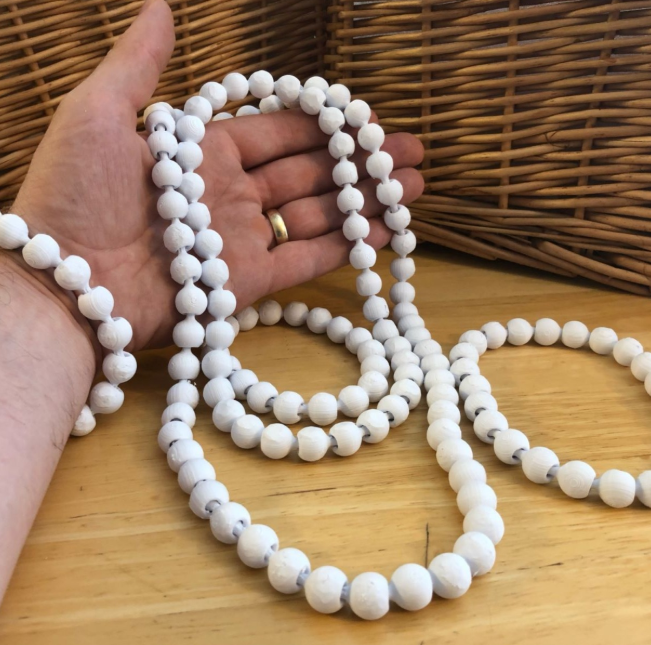
Jewelry is a top contender among 3D printing items to sell because of its demand for unique, eye-catching designs. Create intricate patterns, personalized name pendants, or bold geometric rings. Customization options like engraving initials or meaningful dates make these items even more appealing.
Why it’s profitable:
Customers value exclusivity and are willing to pay a premium for bespoke designs. Plus, jewelry requires minimal material but offers high-profit margins.
2. Phone Accessories
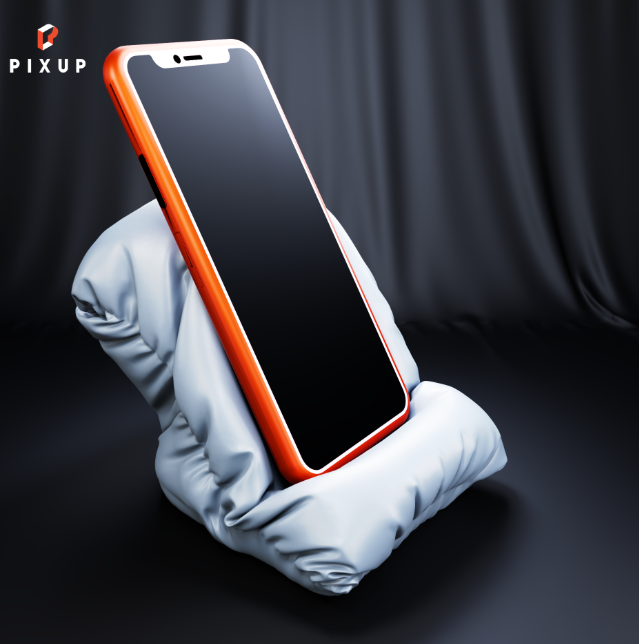
Phone accessories are among the most popular 3D printed items to sell because they cater to almost everyone. Think customizable phone cases, cable organizers, or multi-functional phone stands. You can also create mounts or grips tailored to specific phone models.
Why it’s profitable:
People love practical and stylish solutions for their gadgets, making this a high-demand market.
3. Vases and Planters
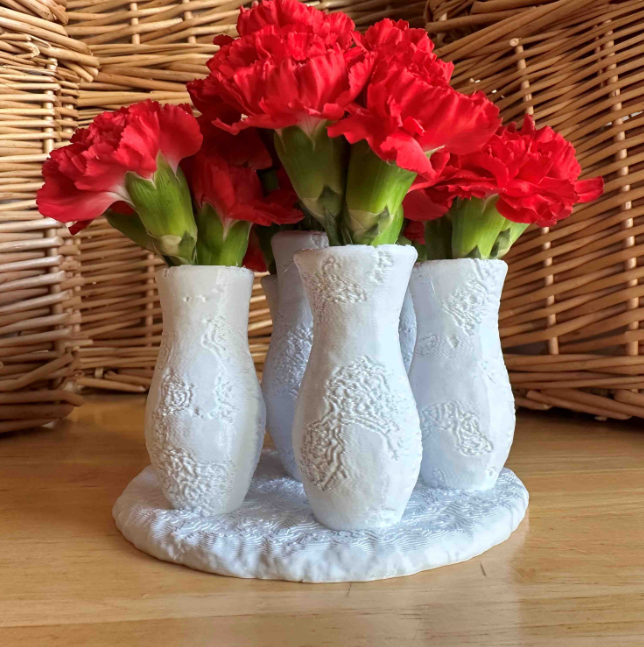
Tap into the home decor market by designing artistic vases and planters. Unique features like self-watering systems or modular stackable designs can set your products apart. Offer customization options like color choices or engraved designs.
Why it’s profitable:
Indoor gardening is trending, and stylish plant pots are sought after by homeowners and plant enthusiasts alike.
4. Cosplay Props
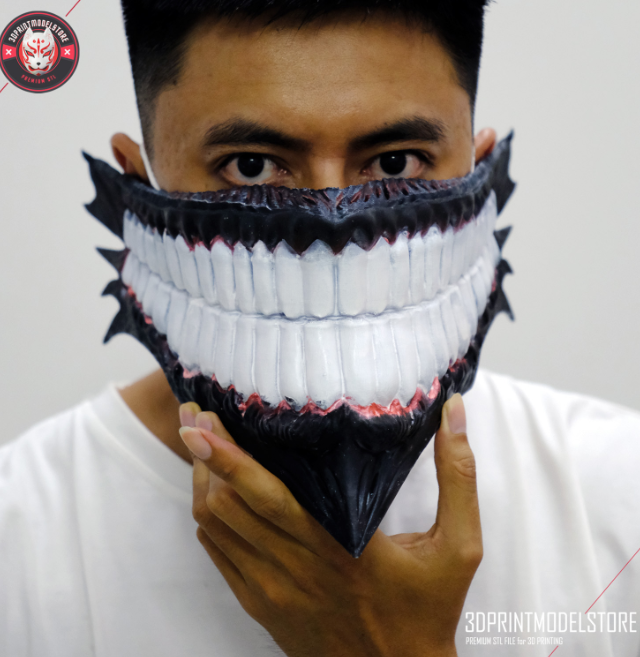
The cosplay community is a goldmine for cool things to 3D print and sell. From masks and helmets to full-scale armor pieces, cosplayers are willing to pay for accurate, high-quality props that bring their costumes to life. Focus on popular characters and customizable options.
Why it’s profitable:
Cosplay enthusiasts often lack the tools or skills to create props themselves, making this niche highly lucrative.
5. Gaming Miniatures
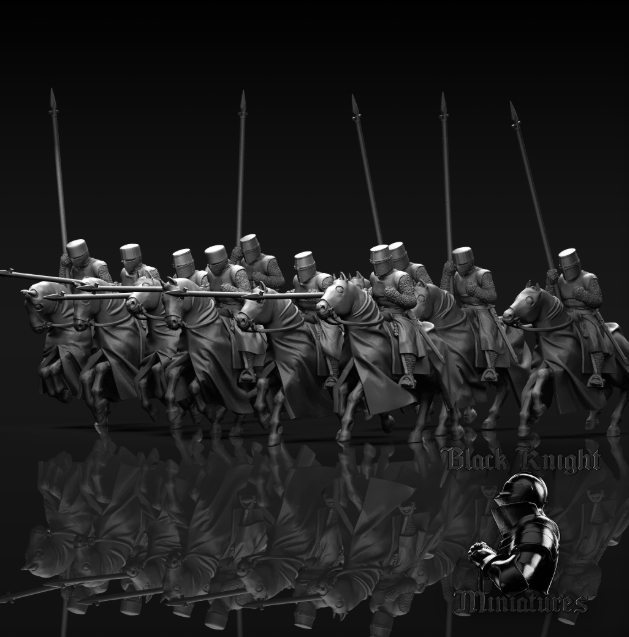
Tabletop gaming is more popular than ever, and custom miniatures are in high demand. Use your 3D printer to craft intricate RPG characters, terrain pieces, or custom dice towers. Resin printers work best for achieving the fine details gamers expect.
Why it’s profitable:
Gamers are willing to pay premium prices for personalized and highly detailed miniatures that elevate their experience.
6. Replacement Parts
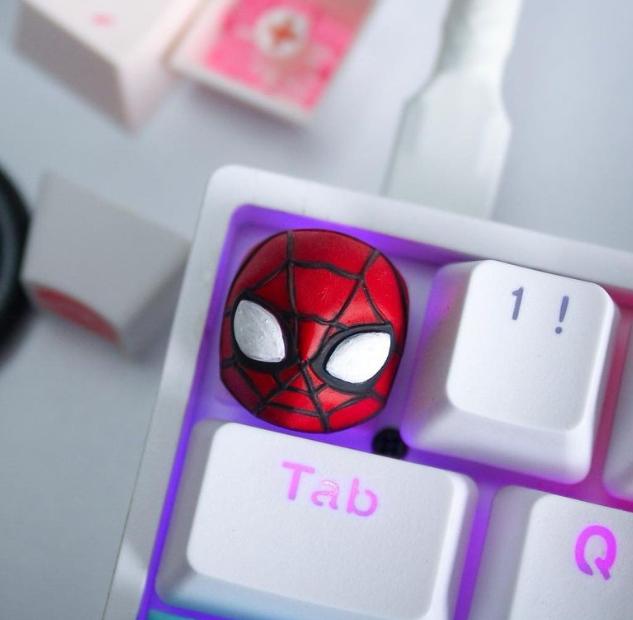
Help people solve real-world problems by offering replacement parts for appliances, gadgets, or vehicles. From broken knobs to custom drone components, replacement parts are among the best things to 3D print and sell because they fulfill specific needs.
Why it’s profitable:
Many replacement parts are no longer manufactured, and customers are often willing to pay a premium for a solution.
7. Kitchen Gadgets
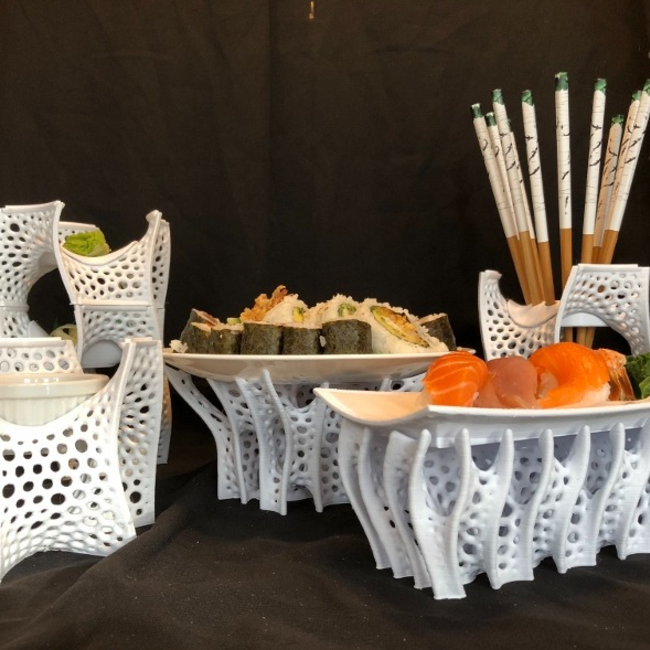
Create functional and fun kitchen tools like cookie cutters, bottle openers, egg holders, or measuring spoons. Add unique twists, such as themed designs or multi-functional features, to make your products stand out.
Why it’s profitable:
Kitchen gadgets make great gifts and everyday essentials, ensuring consistent demand.
8. Educational Tools
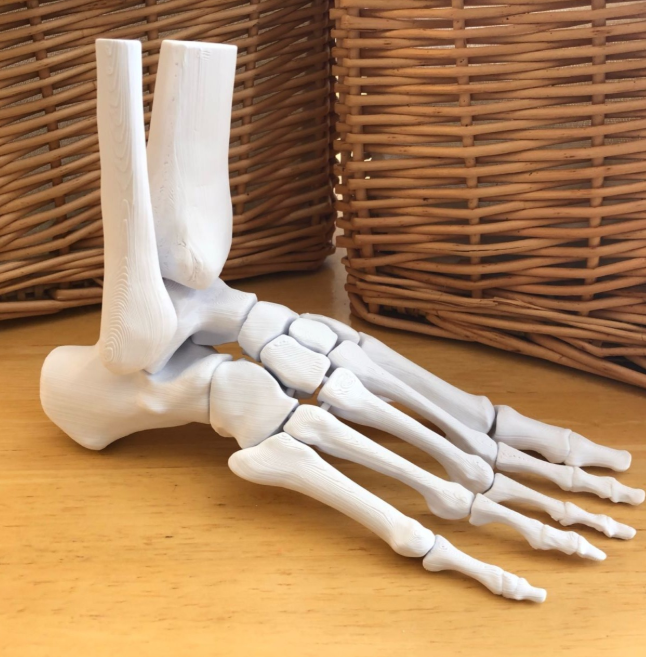
Design educational aids like anatomy models, geometric shapes, or interactive topographic maps. These are perfect for teachers, homeschoolers, or students looking to make learning more engaging and tactile.
Why it’s profitable:
Educational tools serve a practical purpose and often cater to institutions, making bulk orders a possibility.
9. Custom Pet Accessories
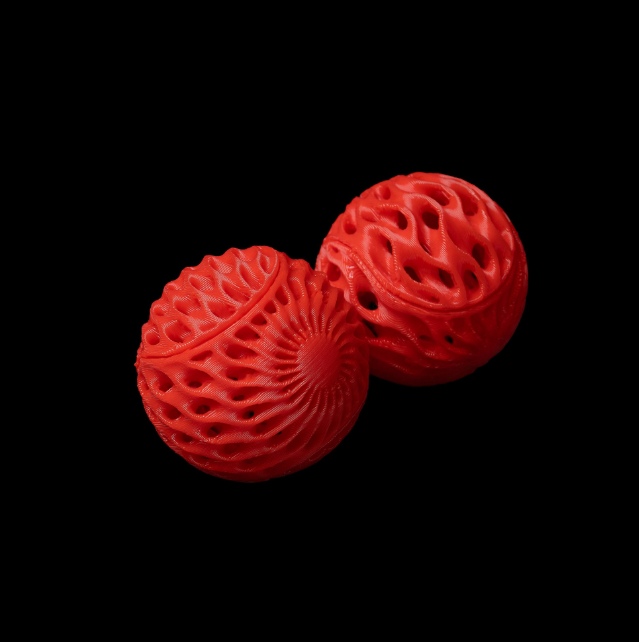
Pet owners love spoiling their furry friends, and 3D printed things to sell like custom name tags, collars, or toys are always a hit. You can even create orthopedic supports or customized feeding bowls for pets with special needs.
Why it’s profitable:
Pet lovers are willing to pay for unique, high-quality items that make their pets stand out.
10. Home Decor Items
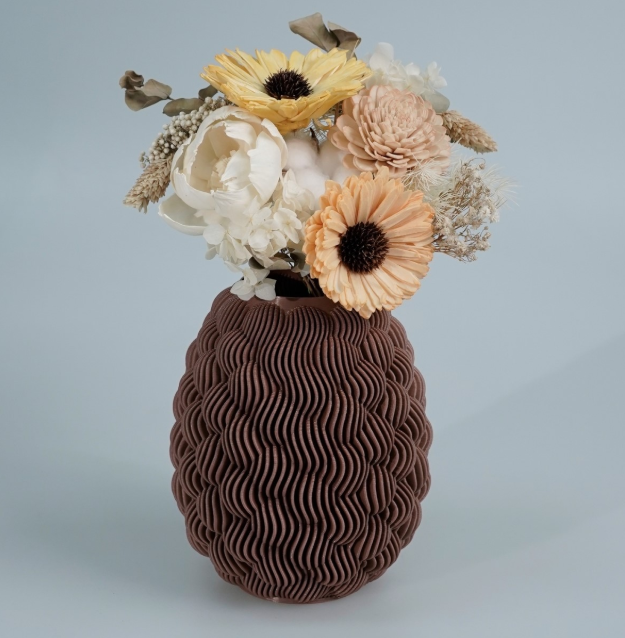
From intricate light fixtures to statement wall art, home decor products offer endless possibilities. Use your 3D printer to create bold, modern designs that catch the eye. Offer customizable options like color schemes or personalized engravings to increase their appeal.
Why it’s profitable:
Home decor items are evergreen products, consistently in demand as people look to personalize their spaces.
11. Board Game Accessories
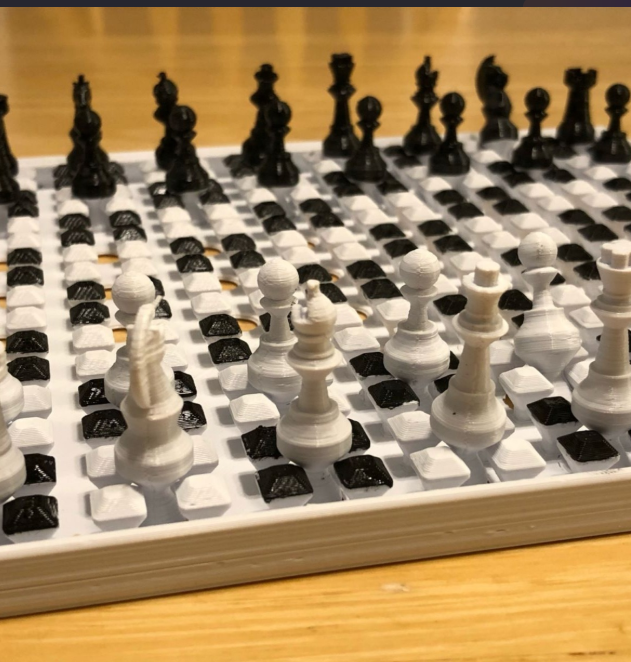
Cater to board game enthusiasts with items like card organizers, custom game tokens, or dice trays. Fans of games like Settlers of Catan or Dungeons & Dragons are always looking for ways to enhance their gameplay experience.
Why it’s profitable:
These niche products are highly specific and often hard to find, making them a go-to for gaming enthusiasts.
12. Office Organizers
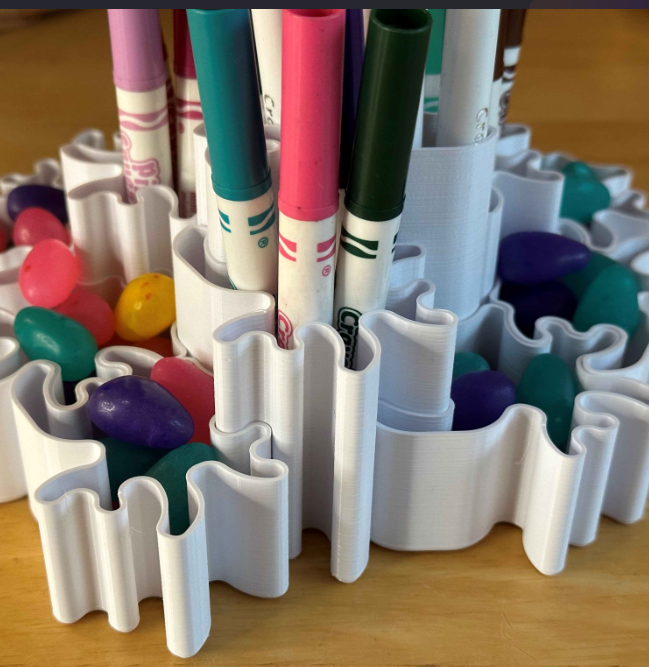
Create stylish and functional items for the workspace, like pen holders, cable organizers, or laptop stands. Offer personalization options such as engraved names or logos for professionals looking to elevate their desk setup.
Why it’s profitable:
Office supplies are practical, and customization adds a personal touch that buyers appreciate.
13. Light Fixtures
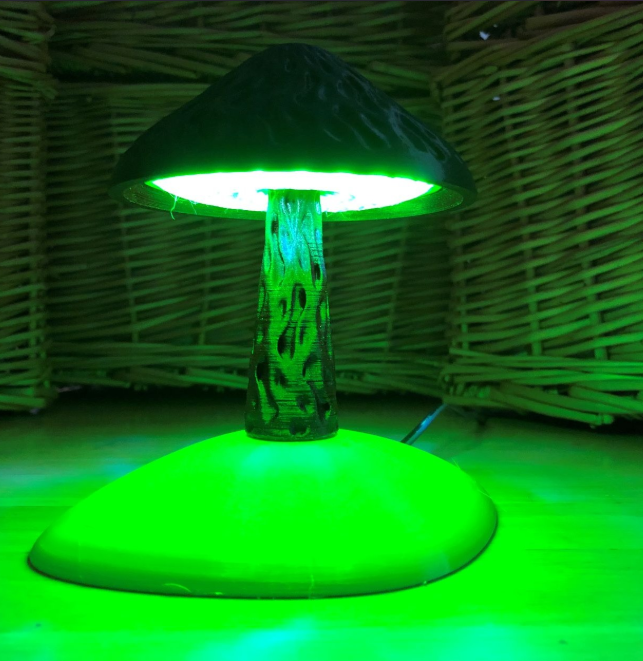
Blend art and functionality with custom light fixtures and lampshades. Use intricate geometric patterns to create unique designs that cast beautiful shadows, perfect for modern or minimalist home decor.
Why it’s profitable:
Lighting decor is a premium market, and 3D printing allows for unique, high-margin designs.
14. Custom Keychains
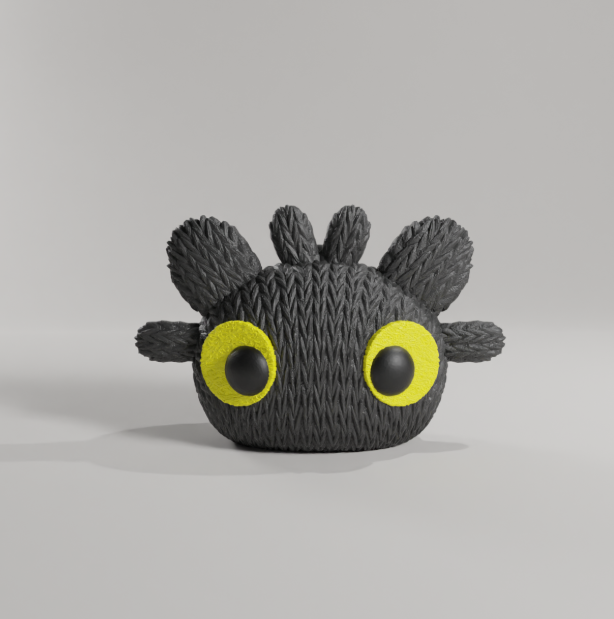
Keychains are simple yet versatile products. Create personalized designs featuring names, logos, or themed shapes for gifts, promotional items, or keepsakes. They’re quick to print and require minimal material.
Why it’s profitable:
Keychains are affordable impulse buys, making them a consistent seller.
15. Travel Accessories
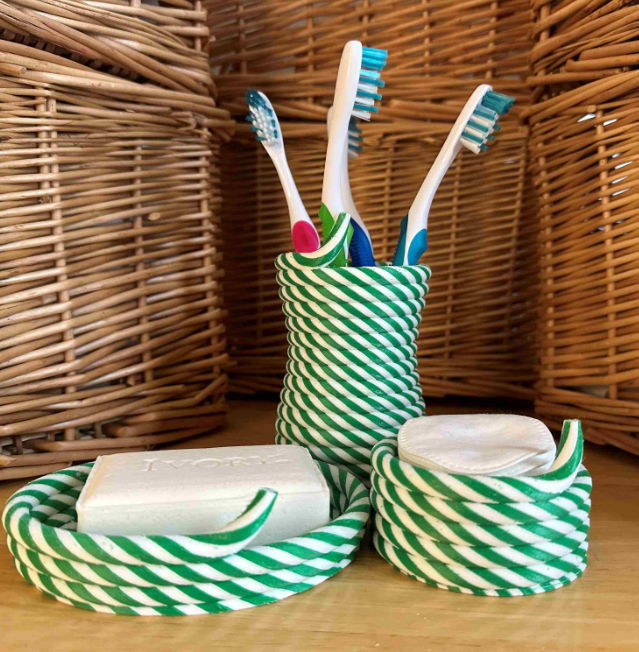
Design travel-friendly items like compact soap cases, headphone organizers, or collapsible toothbrush holders. These products cater to the needs of frequent travelers who value convenience and functionality.
Why it’s profitable:
Practical travel accessories are always in demand, especially for niche markets like backpackers or business travelers.
16. Personalized Gifts
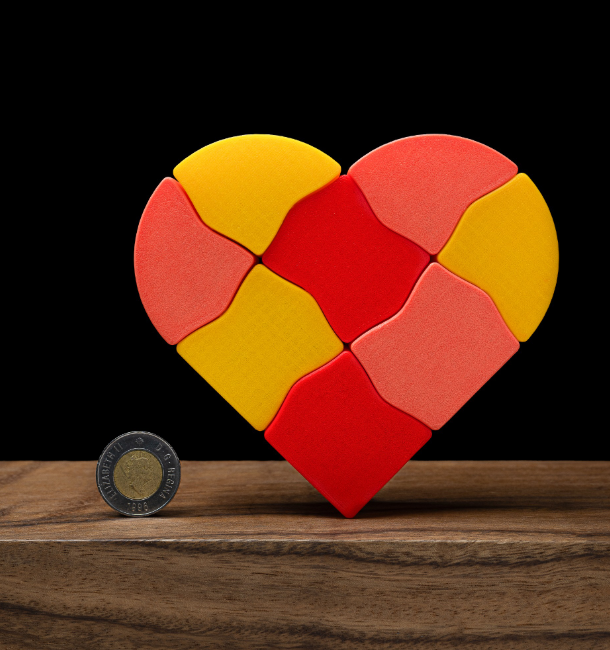
Offer unique gift items like custom picture frames, engraved ornaments, or one-of-a-kind keepsakes for special occasions. Products tailored for weddings, birthdays, or anniversaries are particularly popular.
Why it’s profitable:
Personalized gifts create emotional value, encouraging buyers to spend more.
17. Architectural Models
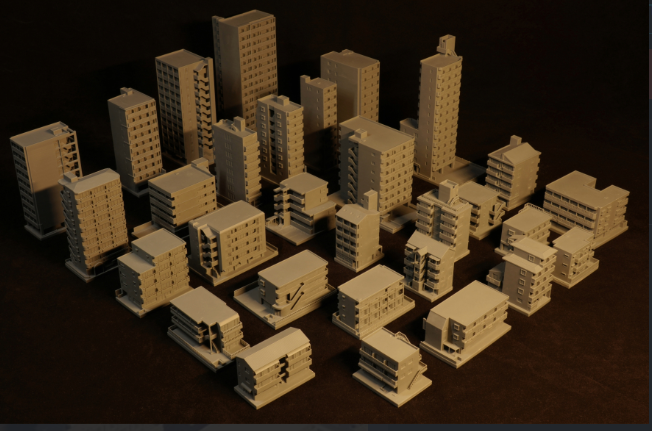
Work with architects or real estate professionals to create 3D printed building models. These intricate designs help visualize projects and are invaluable tools for presentations or client meetings.
Why it’s profitable:
Architectural models are a high-value product, often commanding premium prices for their detail and functionality.
18. Cosplay Accessories
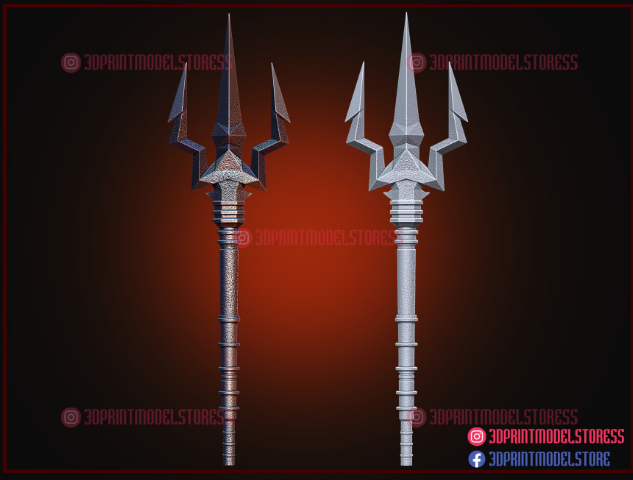
Expand beyond props to include detailed costume components like gauntlets, chest plates, or belts. Cosplayers value accuracy, so offering intricate, customizable pieces can set you apart.
Why it’s profitable:
Cosplayers often spend significant amounts on their costumes, and quality accessories are in high demand.
19. Seasonal Decorations
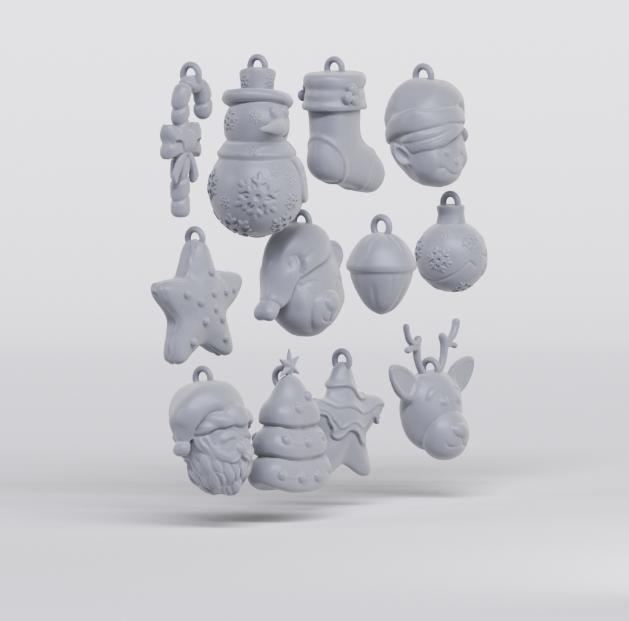
Get festive with holiday-themed items like Christmas ornaments, Halloween decorations, or Valentine’s Day gifts. These items are especially popular during peak seasons.
Why it’s profitable:
Seasonal products create a recurring revenue stream, with demand surging during holidays.
20. Educational Models

Go beyond basic tools to create interactive models like planetary systems, human anatomy replicas, or historical landmarks. These appeal to schools, museums, and homeschooling parents.
Why it’s profitable:
Educational tools often cater to institutional buyers, increasing the potential for bulk orders.
21. Personalized Merchandising Items
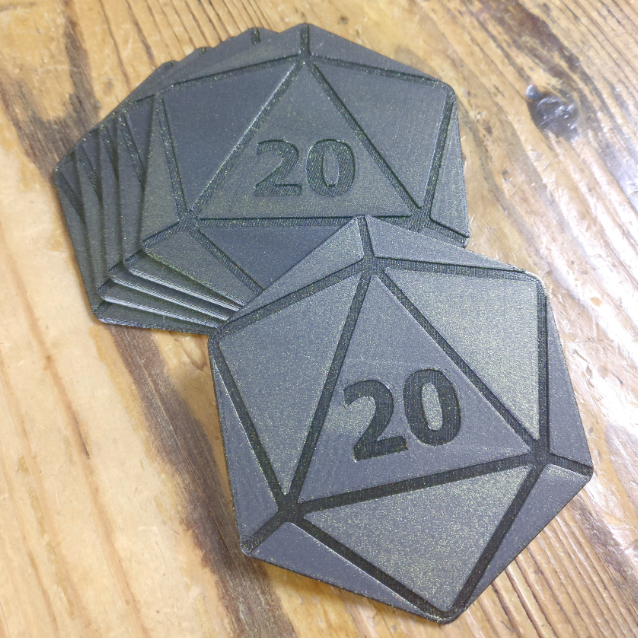
Collaborate with local businesses or influencers to create custom-branded merchandise like coasters, badges, or promotional gifts. Offer bulk discounts for larger orders.
Why it’s profitable:
Businesses are always looking for unique ways to promote their brand, and 3D printing provides a cost-effective solution.
22. Anime Models
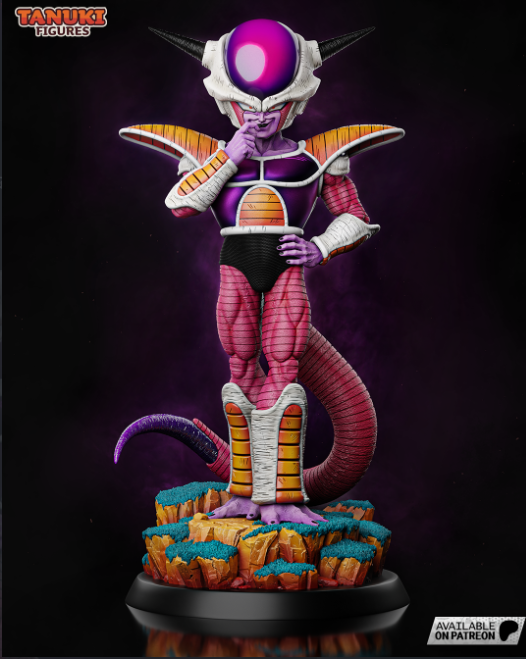
Design and 3D print detailed anime figurines, characters, or accessories. These can range from popular characters from mainstream anime to custom-designed creations for niche subcultures. Anime models can include everything from small keychain figures to large, intricate display models.
Why it’s profitable:
Anime fans are passionate and often eager to collect high-quality, limited-edition models. There is a growing demand for both mainstream and niche anime products, offering a diverse market opportunity for tailored creations.
4. How to Sell 3D Prints Successfully
Creating high-quality products is just one part of the equation; selling them effectively is what turns your hobby into a business. Whether you’re new to e-commerce or looking to refine your strategy, here are actionable steps to help you succeed.
1. Choose the Right Selling Platform
The platform you choose to sell your 3D printed things can greatly influence your reach, sales, and growth. Here’s a breakdown of the top platforms:
Etsy
Perfect for personalized and artistic items like jewelry, home decor, and gifts. Etsy attracts buyers seeking unique, handmade products.
Amazon Handmade
Great for artisans looking to tap into a broader audience. It’s especially effective for functional products like kitchen gadgets or replacement parts.
eBay
Ideal for selling niche items or 3D printed replacement parts. The auction setup is also a great way to test pricing and gauge demand.
Facebook Marketplace
An excellent choice for local sales, particularly for bulky or one-off items like architectural models or large planters.
Cults, MyMiniFactory, and Thingiverse
These platforms are perfect if you prefer selling digital designs rather than physical items. They allow you to offer 3D print ideas to sell directly to other creators.
Phrozen Verified on PIXUP: The Ultimate Selling Advantage
For creators looking to stand out, becoming a Phrozen Verified Creator on PIXUP offers exclusive benefits that can supercharge your sales:
- Increased Exposure. Access Phrozen’s vast network of 10,000+ potential buyers, boosting your visibility.
- Higher Earnings. Earn a premium 5% higher pricing margin compared to standard models.
- Pre-Supported Files. Save time and effort with free, pre-supported files, making your designs ready-to-print for customers.
- Hands-Free Operations. Focus on creativity while PIXUP handles the operational aspects of selling.
2. Build a Strong Online Presence
Your online presence is the backbone of your marketing strategy. Even if you’re selling on established platforms, having a personal brand can set you apart.
- Social Media: Use Instagram and Pinterest to showcase your designs with high-quality images and videos. Platforms like TikTok and YouTube are great for sharing behind-the-scenes content, like how you create your popular 3D prints to sell.
- Website or Portfolio: A professional website adds credibility. Use it to feature your best-selling items, share customer testimonials, and blog about the creative process.
- Engage with Communities: Join forums, Facebook groups, and Reddit threads related to 3D printing items to sell. Engage authentically—answer questions, share tips, and subtly introduce your products.
3. Price Your Products Correctly
Pricing can make or break your business. Set prices that reflect the quality of your work while remaining competitive.
- Calculate costs: Factor in material, time, electricity, packaging, and platform fees.
- Research competitors: Look at similar 3D printed items to sell to see what the market supports.
- Consider perceived value: Custom or niche products, like cosplay props or intricate jewelry, can often command higher prices.
4. Offer Customization Options
Customization is one of the biggest draws of 3D printing. Whether it’s adding a name to a pet tag or creating a unique phone case design, personalized products allow you to charge a premium.
Tip: Offer easy ways for customers to request customizations. Use order forms or messaging tools on platforms like Etsy or your website.
5. Use Stunning Product Photos
Your photos are often the first interaction a buyer has with your product. Invest in good lighting and use a clean, uncluttered background to highlight your creations. Include multiple angles and close-ups to showcase details, especially for intricate 3D printed ideas to sell like jewelry or gaming miniatures.
6. Provide Excellent Customer Service
Happy customers are your best advocates. Respond promptly to inquiries, fulfill orders on time, and be prepared to fix issues like misprints or damages during shipping. Encourage satisfied buyers to leave reviews, as these build trust and attract more business.
5. Marketing Strategies for Your 3D Printing Business
The right marketing strategies can help you stand out in a crowded market. By combining social media, SEO, and community engagement, you can maximize the visibility of your 3D printing items to sell.
1. Leverage Social Media
Social platforms are a cost-effective way to reach your audience.
- Instagram: Post photos and videos of your products, such as a time-lapse of a vase being printed or a showcase of your best 3D printed items to sell.
- TikTok: Create short, engaging videos showing the 3D printing process, from design to finished product.
- Facebook Groups: Join niche groups like tabletop gaming or cosplay communities, where you can connect with people who value popular 3D prints to sell.
2. Optimize for Search Engines
SEO (Search Engine Optimization) is crucial for being discovered online. Use keywords like things to 3D print and sell and 3D printed ideas to sell in your product titles, descriptions, and blog content.
Example: If you’re selling miniatures for tabletop games, title your listing as: “Custom Tabletop Gaming Miniatures – Unique 3D Prints to Sell for RPG Fans.”
3. Run Paid Ads
Paid advertising can give you a significant boost, especially when targeting specific audiences.
- Google Ads: Target keywords like what to 3D print and sell or how to sell 3D prints to capture search traffic.
- Social Media Ads: Platforms like Instagram and Facebook allow you to target users based on demographics, interests, and behaviors.
4. Offer Discounts and Promotions
Sales and discounts create urgency and attract buyers. Consider offering:
- Limited-time discounts on seasonal items, like Christmas ornaments.
- Bulk purchase deals for items like educational models or replacement parts.
- First-time buyer discounts to encourage initial sales.
5. Collaborate with Influencers
Partner with influencers in relevant niches to showcase your products. For example, a cosplay influencer can feature your custom props, driving traffic to your store.
6. Create Valuable Content
Share tutorials, design tips, or behind-the-scenes videos on your blog or social media. This establishes you as an expert in the field and builds trust with potential buyers.
By combining these strategies, you’ll not only attract more buyers but also establish a loyal customer base that keeps coming back for your best 3D printed items to sell. Let me know if you’d like to dive deeper into any specific area!
6. Challenges in the 3D Printing Business and How to Overcome Them
Running a 3D printing business can be incredibly rewarding, but like any entrepreneurial venture, it comes with its challenges. Understanding these hurdles and proactively addressing them can make a world of difference in your journey to success.
1. High Initial Investment
While entry-level printers are affordable, scaling your business often requires high-end equipment, such as resin printers or printers with large build volumes. These can be costly, especially when combined with materials, software, and accessories.
Solution:
Start small and reinvest your profits into better equipment. Focus on 3D printed things to sell that require minimal material but yield high margins, like jewelry or keychains, to build up capital. Consider leasing high-end printers if buying outright is not feasible.
2. Time-Intensive Production
3D printing, especially for intricate designs, can take hours or even days for large items. This limits how much you can produce, particularly if you only have one or two printers.
Solution:
Optimize your print settings to reduce production time without compromising quality. For high-demand items, batch print smaller products. As your business grows, invest in multiple printers to create a “print farm,” which can significantly boost your output.
3. Post-Processing Complexity
Many 3D printing items to sell require post-processing, such as sanding, painting, or curing, to achieve a professional finish. This can add significant labor and time costs.
Solution:
Streamline your post-processing workflow by investing in tools like curing stations for resin prints or automated sanding machines. Offer raw or unprocessed items at a lower price for customers who prefer to finish them themselves.
4. Intellectual Property Issues
Selling items that infringe on copyrights or trademarks is a common pitfall in the 3D printing industry. For example, printing fan merchandise without proper licenses can lead to legal complications.
Solution:
Stick to original designs or use licensed models from repositories like Cults or MyMiniFactory. Always check the licensing agreements for any digital designs you download. When in doubt, consult with an intellectual property expert.
5. Competition
Solution:
Differentiate your brand by focusing on quality, personalization, and customer service. Explore underserved niches, like educational models or unique replacement parts, to carve out your own space.
The growing popularity of 3D printed items to sell has led to a saturated market in some niches. Standing out can be difficult, especially if others are offering similar products at lower prices.
7. Scaling Your 3D Printing Business
Once you’ve established a steady stream of sales, the next step is scaling your business. This involves expanding your offerings, increasing production, and tapping into new markets to maximize your profits.
1. Expand Your Product Range
Introduce new 3D prints to sell that complement your existing offerings. For example, if you’re selling gaming miniatures, consider adding terrain pieces or dice towers. Seasonal products, like Christmas ornaments or Halloween decorations, are also great for capturing recurring demand.
Tip: Use customer feedback to identify what additional products your audience wants.
2. Invest in Better Equipment
Scaling your business often requires faster, more efficient printers. High-end printers like resin-based or multi-extruder machines allow you to create complex designs and print multiple items simultaneously.
Pro Tip:
Build a “printer farm” with multiple units to handle larger orders or diverse product lines. This setup increases productivity and helps you meet growing demand.
3. Optimize Your Workflow
As your business grows, inefficiencies in your workflow can become bottlenecks. Streamline processes such as slicing, printing, and post-processing to reduce production time.
- Use batch printing for small items.
- Automate post-processing tasks where possible, such as using a curing station for resin prints.
- Standardize your design and production methods to minimize errors.
4. Tap Into New Markets
Expand beyond your current audience to reach new customer segments. For instance:
- Partner with local businesses to supply 3D printed items like promotional products or branded merchandise.
- Collaborate with educators to provide bulk educational tools.
- Explore international shipping to widen your reach.
5. Leverage Customer Loyalty
Happy customers are your best advocates. Encourage repeat business by offering loyalty programs or exclusive discounts for returning buyers. Ask for testimonials and showcase them on your website or social media.
Example: Offer a 10% discount to customers who leave a review or refer a friend.
6. Explore Wholesale Opportunities
Selling wholesale to retailers or institutions can help you move large quantities of products at once. Approach local stores, schools, or hobby shops with your best 3D printed items to sell, like educational tools or gaming miniatures.
7. Hire Help or Outsource
As demand grows, you may need assistance with production, customer service, or shipping. Hiring freelancers or outsourcing specific tasks allows you to focus on scaling your business further.
Tip: Start by outsourcing repetitive tasks, like packaging or post-processing, to free up your time for creative and strategic decisions.
Scaling your 3D printing business requires careful planning and smart investments, but with the right approach, you can turn your passion into a thriving enterprise. Let me know if you’d like to explore specific strategies further!
🎨 Phrozen Verified: Print Stunning, High-Detail Models with Ease!
Tired of failed prints and endless support adjustments? Phrozen Verified models are expertly pre-supported and optimized for hassle-free 3D printing. Skip the setup, hit print, and get stunning, high-detail 3D animal prints with zero stress. Explore the collection now and bring your models to life with ease! 🚀🔥

Wrapping It Up
The world of 3D printing offers unparalleled opportunities to transform creativity into profit. From intricate miniatures to practical replacement parts, the ability to create unique, customized items has never been more accessible—or in demand. Whether you’re just starting out or ready to scale, embracing this cutting-edge technology can open doors to both personal and financial success.
To recap:
- Focus on popular 3D prints to sell that align with your skills and the needs of your target audience.
- Leverage the power of customization to differentiate your offerings.
- Optimize your workflow and invest in quality equipment to maximize efficiency and output.
- Build strong connections with customers and expand into new markets to grow your business sustainably.
Success in the 3D printing business isn’t just about having the best designs; it’s about understanding your audience, adapting to trends, and continuously improving your craft. With thoughtful planning, strategic marketing, and a commitment to quality, you can turn your 3D print ideas to sell into a thriving business.
So, what are you waiting for? Start brainstorming your next best thing to 3D print and sell, and watch as your creations take shape—one layer at a time.
